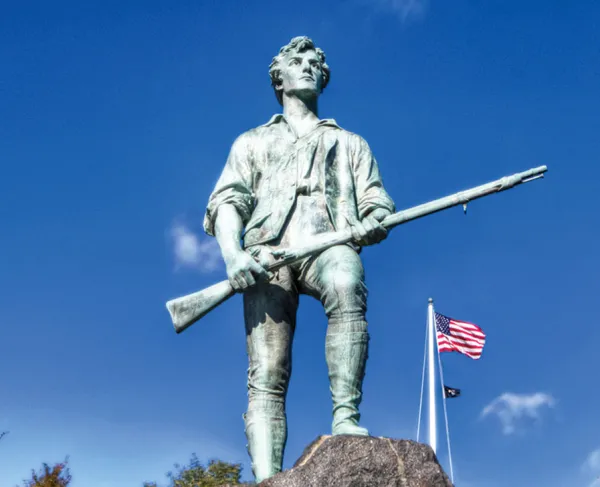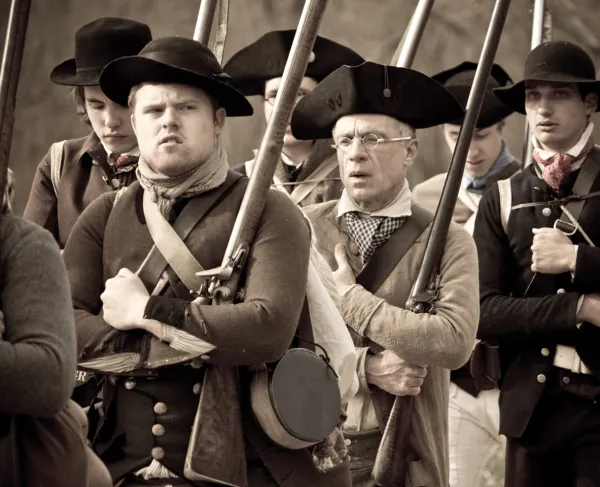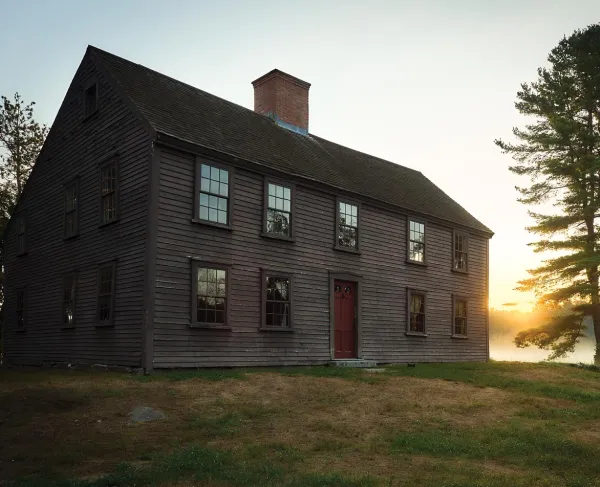
"Concord Bridge, The Nineteenth of April, 1775"
In 1837, Ralph Waldo Emerson famously described the first shot of the battle of Concord as the “shot heard 'round the world.” These words, from the first stanza of the poem “Concord Hymn," immortalized the town's Old North Bridge, even though the shots had been fired earlier that same morning in Lexington. However, Emerson claimed a deeper connection to Concord and its now immortalized bridge. His grandfather was the parson at the Old Manse, situated adjacent to the North Bridge. Having lived much of his own life in Concord, Emerson unsurprisingly chose to honor the town's role in igniting the American Revolution.
Regardless of the phrase's origin, Emerson's "shot heard 'round the world" has grown to personify the Old North Bridge itself. Located just north of the town of Concord, the North Bridge, as Concord's residents referred to it, crossed the Concord River at the site of a previous bridge built in the 1650s, But the town’s growth to 1,500 inhabitants on the eve of the American Revolution necessitated the renovation of the North Bridge, and in 1760 residents constructed the bridge which played a prominent role in the Concord Fight fifteen years later.
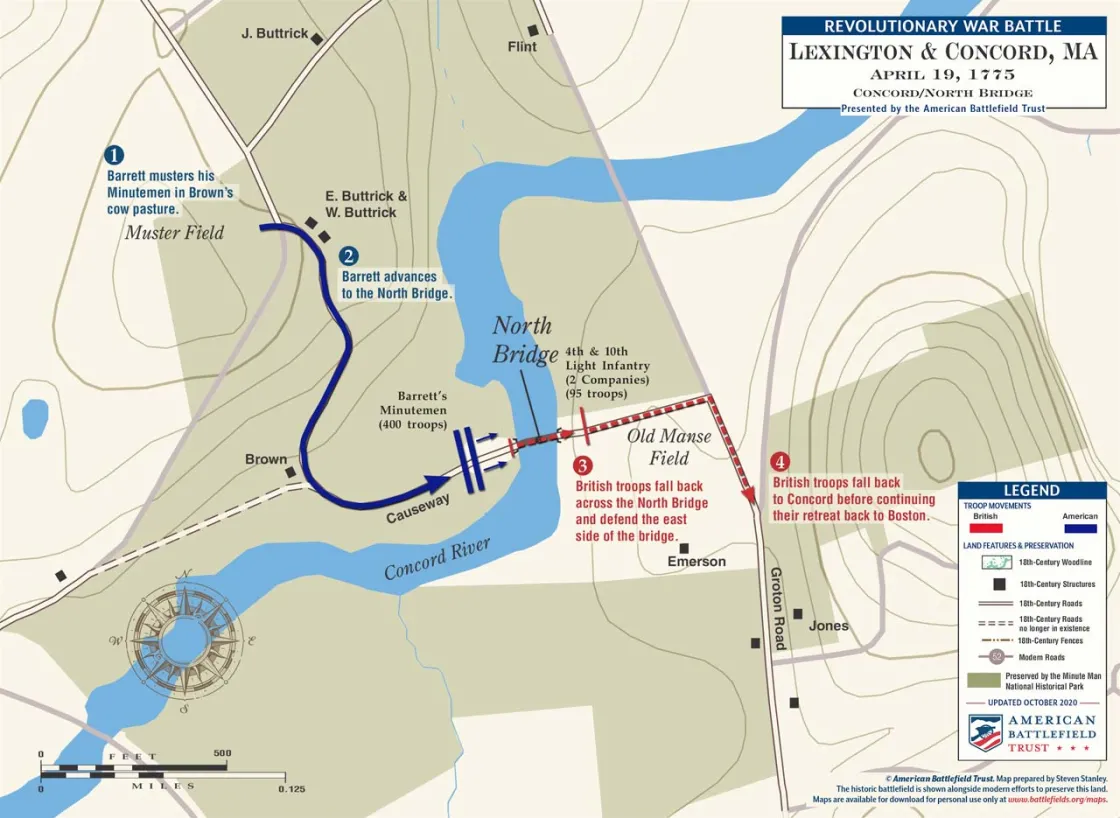
On the morning of April 19, 1775, after clearing the town of Lexington and arriving in Concord, three companies of British light infantry began advancing toward the North Bridge. Two of the companies guarded the bridge while the third marched further to the farm of Colonel James Barrett, head of the local militia and suspected of illegally storing munitions on his property. While the British soldiers investigated the Barrett property, events moved toward a climax around the North Bridge.
At approximately 9:30 am, after witnessing what was perceived as the burning of the town—in actuality the British soldiers were then trying to put out a fire that had unintentionally been started—the militia and minutemen commanded by Col. James Barrett began moving down Punkatasset Hill toward the two British companies guarding the bridge. Although the colonial forces numbered close to 400 men and faced only 90 British soldiers, shots were fired and two of the Massachusetts citizens were struck and killed as they approached the North Bridge. The proverbial “shot heard 'round the world,” or shots more accurately, had been fired. The American Revolution thus began.
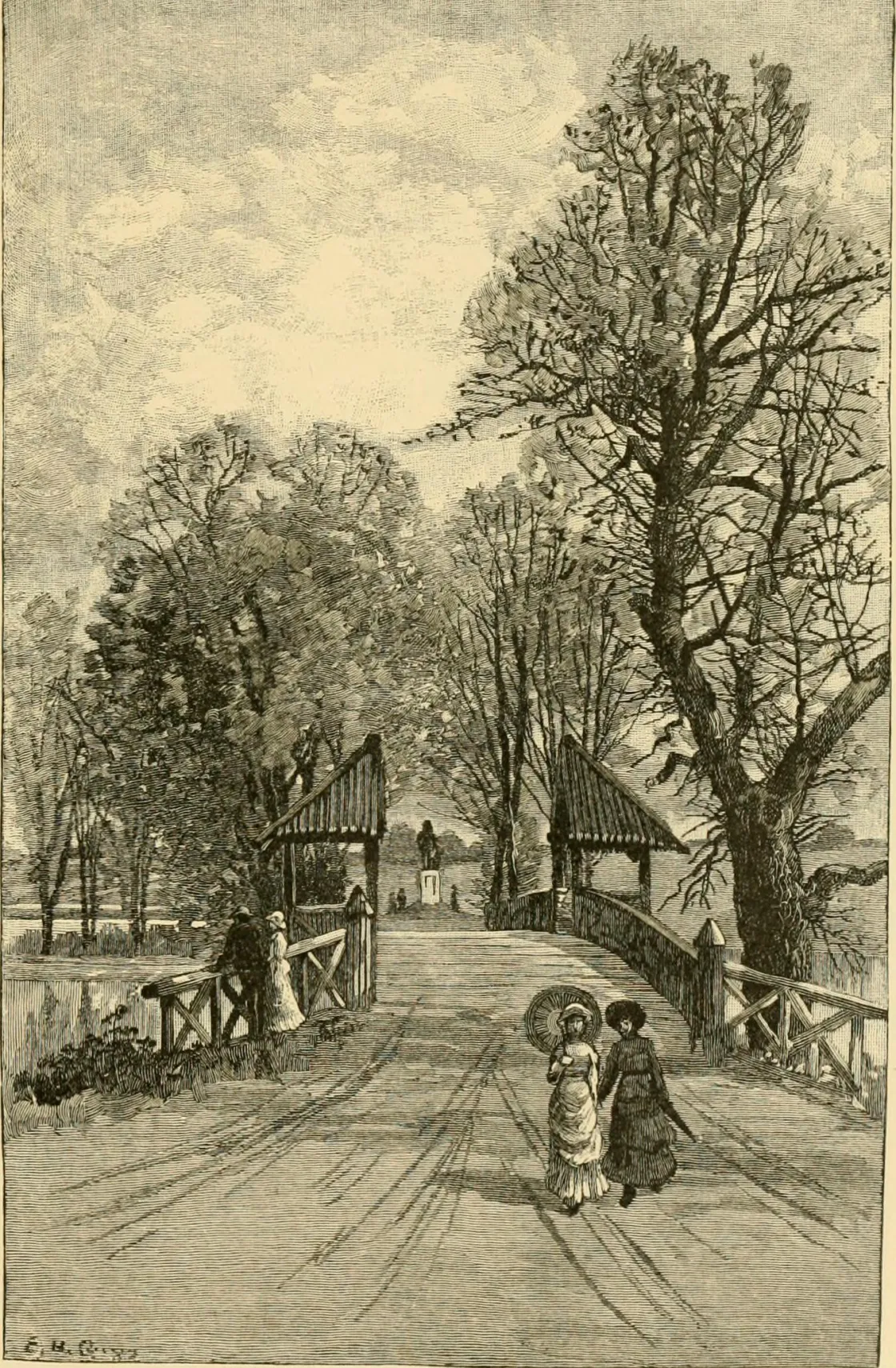
In 1874, a year before the battle's centennial, the town of Concord formed a committee to place a bridge where the former span stood on that fateful April 1775 morning. The committee planned to complement the stone obelisk placed in 1837 commemorating the action of the patriot militia and minutemen at the engagement by reconstructing the North Bridge. A cousin of Ralph Waldo Emerson, William Ralph Emerson, designed the new bridge further cementing the Emerson connection.
In the decades since the action on April 19, 1775, a bridge has spanned the Concord River at the site that bore the fissure between Great Britain and her North American colonies. The latest bridge, completed in 1956 and renovated in the passing decades, is now preserved by Minuteman National Historical Park, a unit of the National Park Service. One can now follow the footsteps of both the British and colonists on that spring April day to where they fired the "shot heard 'round the world."
Related Battles
93
300


